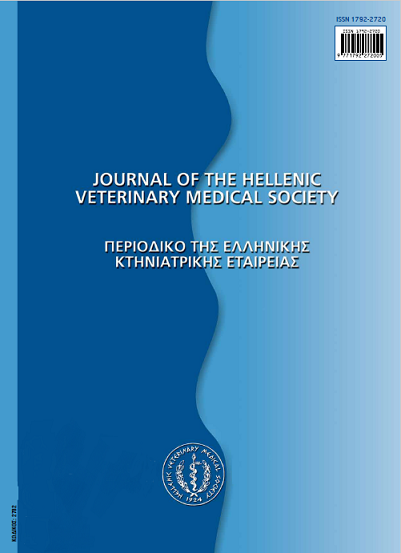Canine pododermatitis: A retrospective study of 300 cases

Abstract
The medical records of 300 dogs with pododermatitis were reviewed and the possible associations between signalment, history, clinical and laboratory findings, and various primary and secondary causative factors were investigated. The age of the dogs ranged from 3 months to 15 years. Mongrels, West Highland White Terriers (WHWTs) , French Bulldogs, German Shepherd Dogs (GSDs) and Shar-Peis were overrepresented. In most of the cases pododermatitis was chronic/recurrent (69%), pruritic (75%) and affected all four feet (54%). The dominant affected site was interdigital skin (66%), whereas erythema (77.7%), hypotrichosis/alopecia (57%), skin thickness (26.3%), crusts (25%) and hyperpigmentation (22%) were the most frequently encountered lesions. Bacteria (109/300), as secondary causes, were more commonly found than Malassezia spp. (43/300). The principal primary causes were allergies (131/300), pododemodicosis (32/300), sarcoptic mange (17/300), skin neoplasms (14/300), leishmaniosis (14/300) and interdigital furunculosis (11/300). In this study, West Highland White Terriers, Shar-Peis and French Bulldogs were predominantly presented with allergic pododermatitis (P=0.001). Interdigital skin was the overrepresented site for atopic dermatitis (117/131) and pododemodicosis (20/32), while metatarsal area was for sarcoptic mange (17/17). Crusts were commonly seen in bacterial pododermatitis (P<0.001), whereas greasy crusts (P<0.001) and lichenification (P=0.008) were seen in Malassezia pododermatitis. Finally, dogs that did not often have paw cleaning had the lowest rates of Malassezia infection (P=0.047).
Article Details
- How to Cite
-
Bouza- Rapti, P., Kaltsogianni, F., Koutinas, A., & Farmaki, R. (2023). Canine pododermatitis: A retrospective study of 300 cases. Journal of the Hellenic Veterinary Medical Society, 74(1), 5355–5362. https://doi.org/10.12681/jhvms.29485
- Issue
- Vol. 74 No. 1 (2023)
- Section
- Research Articles

This work is licensed under a Creative Commons Attribution-NonCommercial 4.0 International License.
Authors who publish with this journal agree to the following terms:
· Authors retain copyright and grant the journal right of first publication with the work simultaneously licensed under a Creative Commons Attribution Non-Commercial License that allows others to share the work with an acknowledgement of the work's authorship and initial publication in this journal.
· Authors are able to enter into separate, additional contractual arrangements for the non-exclusive distribution of the journal's published version of the work (e.g. post it to an institutional repository or publish it in a book), with an acknowledgement of its initial publication in this journal.
· Authors are permitted and encouraged to post their work online (preferably in institutional repositories or on their website) prior to and during the submission process, as it can lead to productive exchanges, as well as earlier and greater citation of published work.



